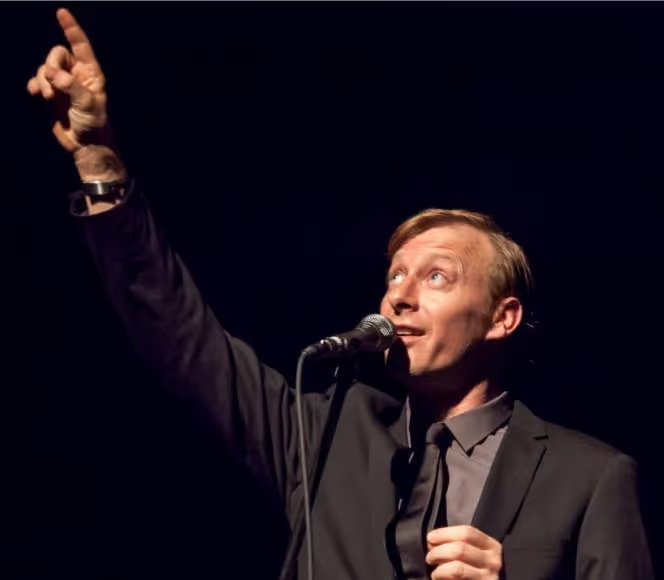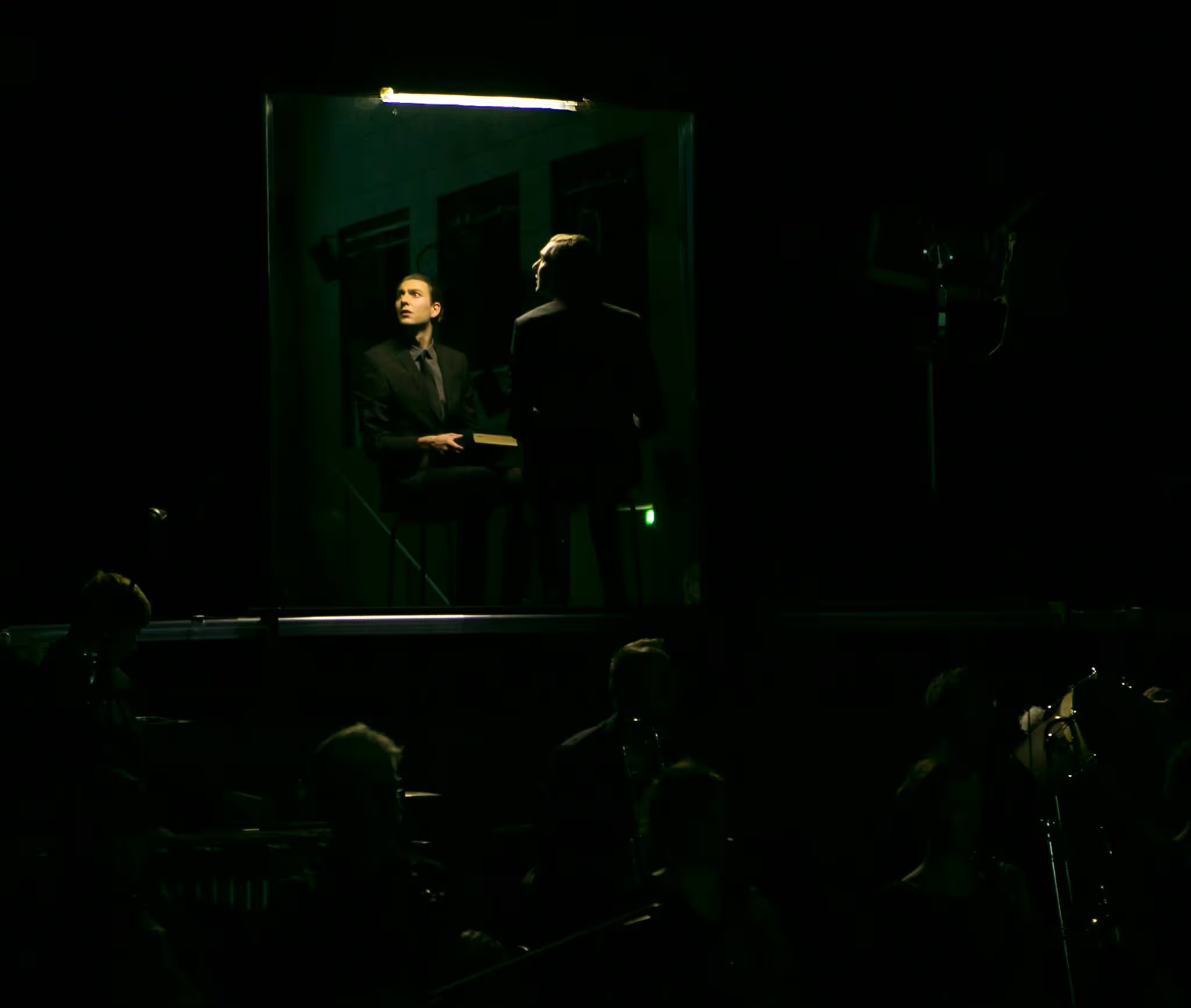Music theatre for four actors and 18 musicians
Duration 100 min.
2016
“If this then that and now what”, a sort of music theater, performed at the Mainzer State Theatre
By Doris Kösterke 2016
"I" ... - no, you can't begin like that. The letter is deleted again from the screen above the stage in the "small house" in Mainz. Further attemps are immediately deleted as well. "Since forever I had the plan to write a book that should start with this sentence. The only problem was: How should it continue from there?". This sentence doesn't seem much better, but stays. "If This Then That And Now What" by Simon Steen-Andersen is a piece about the hardships of writing ...
The composer (ironically?) refers to his work as "multimedial selfreference". He himself is played by four actors, who restleslly, as in constant search for inspiration, walk from a door on one side of the stage to a door on the other side of the stage - where the sound of the doors and the footsteps are integrated parts of the music, just as the trombone glissando that accompagnies the tripping over stairs: Steen-Andersen calls Charlie Chaplin and Buster Keaton his "favourite composers". At later points the actors are miming and speaking (excellent: Rüdiger Hauffe, Marin Lemić, Matthias Lodd, Matti Swiec!), often two at the same time in synchronicity, like a music professor adventorously explaining about art, reality, functional harmony and the four forms of self-reference, the absolute, the multimedial, the auto-processual ad the self-destructing, while periodically interruping with an annoyed "schhh!" when disturbed by one of the musicians. The "schh" slowly becomes part of the musical material: Later, as the music make itself independent from the text, we recognise it again, imitated by the percussion and compositorically developped. In perfect synchronicity and different degrees of heterophone deviations the professor-duo demonstrates stereo- and mono-effects, and in this intense focus on the banal, the "magic of selfreference" starts spreading.
The scenography is strongly defined by 12 string players and their instruments on the first row. The violins and the violas are played vertically to math them visually with the celli and the double basses. Four percussion players are placed further back in the half-dark, surrounding the trombones, who sometimes seem to be performing a choreography, rather than a piece of music. Click tracks replace the conductor. The digital coordination enables a compelling choreography of the stringplayer's bows and the trombone slides and delicate sound phaenomenon like a glissandi that passes through all 12 strings one by one.
The fascination of this perforance was found in the through-composed integration of the acoustic, the visual and the conceptal; also in such delightful ideas like the rope creating a wave across the stage while playing six snare drums in a fast succession. And not least the performances by the actors and the musicians."
Commissioned by the Munich Biennale and the Mainzer State Theatre 2016.






